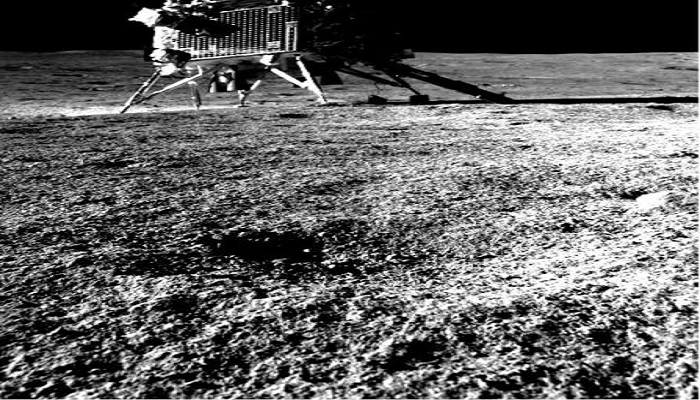ISRO shares pictures of Chandrayaan-3’s Vikram Lander taken by Pragyan rover: Details

[ad_1]
On Wednesday morning (30 August), Pragyan rover clicked an image of Vikram Lander atop the lunar surface, as conveyed by the Indian Space Research Organisation (ISRO). Taking to X, ISRO shared two pictures of the Vikram lander stating that the “image of the mission” was taken by the Navigation Camera onboard the Rover (NavCam).
These NavCams for the Chandrayaan-3 Mission are developed by the Laboratory for Electro-Optics Systems (LEOS).
In one of the images, the space agency has displayed two key payloads that are currently conducting in-situ experimentation on the moon’s south pole. These payloads marked by ISRO in the image are ChaSTE and ILSA.
Chandrayaan-3 Mission:
Smile, please📸!
Pragyan Rover clicked an image of Vikram Lander this morning.
The ‘image of the mission’ was taken by the Navigation Camera onboard the Rover (NavCam).
NavCams for the Chandrayaan-3 Mission are developed by the Laboratory for… pic.twitter.com/Oece2bi6zE
— ISRO (@isro) August 30, 2023
It is pertinent to note that ISRO earlier shared the first-ever temperature profile of the moon’s south pole. The graph revealed that temperature changes drastically with depth on the moon’s south pole. Apparently, the temperature profile was developed with the help of the ChaSTE payload which is onboard the Vikram lander.
As per the official information shared by ISRO, the ChaSTE payload is being used to understand the thermal behaviour of the lunar surface. For this purpose, the ChaSTE payload has 10 individual temperature sensors mounted on it.
The second payload – ILSA stands for Instrument for Lunar Seismic Activity. It is used for measuring the seismicity around the landing site of the lander. As visible in the picture, the ILSA payload has been lowered from the lander Vikram and it is seemingly touching the lunar surface to measure the seismic activity of the moon.
As per official information by ISRO, ILSA will also study the composition of the Moon’s crust and mantle.
Further, the Pragyan rover which is carrying out in-situ (in the original place) chemical analysis of the lunar surface during its mobility is equipped with scientific payloads – Alpha Particle X-ray Spectrometer (APXS) and Laser Induced Breakdown Spectroscope (LIBS). Both of them are used to derive the elemental composition in the vicinity of the landing site.
Earlier, ISRO confirmed that it had found Sulphur, Titanium, Chromium, Oxygen, and other elements on the lunar surface while the search for Hydrogen was underway. This elemental discovery on the moon’s surface was achieved with the help of a Laser-Induced Breakdown Spectroscope (LIBS) instrument which is onboard the Pragyan rover.
As per ISRO, LIBS is being used to derive the chemical composition and infer the mineralogical composition of the moon’s surface so as to improve our understanding of the lunar surface.
While APXS payload will help determine the elemental composition of the Lunar soil and rocks around the lunar landing site.
[ad_2]
Source link



